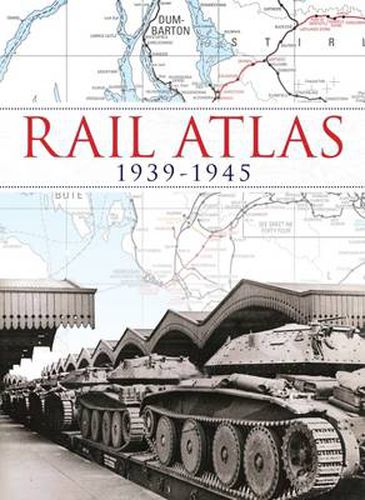Readings Newsletter
Become a Readings Member to make your shopping experience even easier.
Sign in or sign up for free!
You’re not far away from qualifying for FREE standard shipping within Australia
You’ve qualified for FREE standard shipping within Australia
The cart is loading…






In World War 2 the railways of Britain played a pivotal part in the ultimate defeat of Germany and its allies - as they had done in World War 1. Under centralised control, the war effort put a considerable strain upon the infrastructure, equipment and staff of the railway industry. Certain lines which might otherwise have closed, such as the Shropshire & Montgomery, found new roles as military bases and munition dumps were established. Other lines, such as the line from Didcot to Winchester, underwent considerable expansion in order to provide increased capacity. In order to make the railways more efficient a limited number of passenger services were either suspended or withdrawn completely; in many cases, these were never to be restored. This atlas is designed to provide a guide to the impact of the war on the railway industry, illustrating the evolution of the railway network during these years. The various lines are differentiated between those that had passenger services throughout the war, those lines that saw passenger services temporarily or permanently withdrawn, freight-only lines, routes opened during the war and lines that saw capacity increased.
$9.00 standard shipping within Australia
FREE standard shipping within Australia for orders over $100.00
Express & International shipping calculated at checkout
In World War 2 the railways of Britain played a pivotal part in the ultimate defeat of Germany and its allies - as they had done in World War 1. Under centralised control, the war effort put a considerable strain upon the infrastructure, equipment and staff of the railway industry. Certain lines which might otherwise have closed, such as the Shropshire & Montgomery, found new roles as military bases and munition dumps were established. Other lines, such as the line from Didcot to Winchester, underwent considerable expansion in order to provide increased capacity. In order to make the railways more efficient a limited number of passenger services were either suspended or withdrawn completely; in many cases, these were never to be restored. This atlas is designed to provide a guide to the impact of the war on the railway industry, illustrating the evolution of the railway network during these years. The various lines are differentiated between those that had passenger services throughout the war, those lines that saw passenger services temporarily or permanently withdrawn, freight-only lines, routes opened during the war and lines that saw capacity increased.